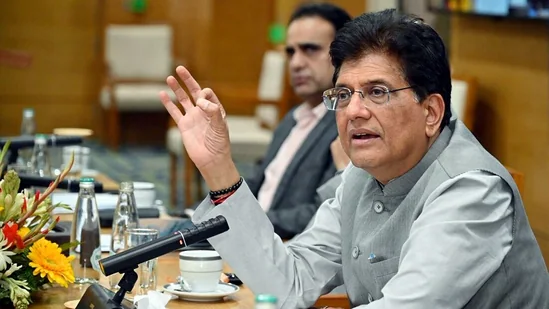End of a Rebel Commander: Madvi Hidma Killed in Andhra Pradesh Encounter
- MGMMTeam

- 2 days ago
- 4 min read
Madvi (Madavi) Hidma, one of India’s most formidable Maoist commanders and the operational brain behind several deadly attacks on security forces, was killed in an intense encounter in Andhra Pradesh’s Alluri Sitarama Raju district on 18 November 2025. The operation, carried out by the state’s elite Greyhounds force, unfolded deep inside the Maredumilli–Pullagandi forest zone near the Andhra–Chhattisgarh–Telangana tri-junction, an area long known as a Maoist stronghold. As dawn broke, security teams acted on precise intelligence inputs, leading to a decisive exchange of fire in which six Maoists, including Hidma, were killed.

Inside the Operation
The confrontation began in the early hours of the morning as Greyhounds units moved through dense forest terrain. The subsequent gunfight was short but intense, ending with the recovery of multiple bodies, including that of Hidma. Reports suggest that his wife, known by aliases such as Raje and Rajakka, was also among those killed. Security personnel seized weapons and ammunition from the site while continuing to sweep the forest to ensure no remaining cadres had escaped. Officials described the encounter as a major operational breakthrough, noting that neutralising a commander of Hidma’s influence significantly shifts the balance in India’s anti-Maoist efforts.
The Rise and Reach of Madvi Hidma
Hidma, believed to be born around 1981 in Sukma district, rose from a tribal village recruit to become one of the most feared strategists in the CPI (Maoist) hierarchy. His ascent within the organisation was unusually rapid, culminating in his leadership of Battalion No. 1 of the People’s Liberation Guerrilla Army (PLGA), considered the most lethal segment of the Maoist military structure. He eventually became the youngest member of the Maoist Central Committee, giving him both symbolic and operational weight within the movement.
Over the years, Hidma became synonymous with some of the gravest acts of Maoist violence in India. He was linked to more than two dozen deadly attacks, including major ambushes in Dantewada, Jhiram Ghati and Sukma–Bijapur. His ability to strike deep inside security zones, elude capture and mobilise fighters earned him a reputation as the most relentless and elusive insurgent leader in the region. With a large bounty on his head and a wide network of foot soldiers, he was viewed as the core strategist driving Maoist resistance in the Bastar-Dandakaranya zone.
Impact on the Maoist Movement
The death of Madvi Hidma is widely regarded as a serious blow to the Maoist insurgency. His leadership was central to planning major ambushes, training cadres and maintaining Maoist influence in remote tribal territories. Security analysts note that losing a commander of his experience creates a sudden vacuum within the group, potentially affecting the Maoists’ ability to coordinate large-scale operations in the near future. However, they also caution that the movement’s entrenched networks, ideological appeal among certain pockets, and ability to regroup in remote regions mean the decline of Maoism will be gradual, not immediate.
The Road Ahead for Security and Local Communities
The encounter has renewed national attention on the long-running conflict in central India. Union Home Ministry officials have celebrated the development as a critical step toward reducing Maoist violence across affected states. Yet, experts highlight the need for a parallel focus on development, governance, and economic opportunities in areas historically underserved by state institutions. For residents of remote tribal villages, the encounter brings both relief and anxiety—relief from the fear of a powerful insurgent commander, and anxiety over potential retaliatory actions or increased militarisation in the region.
The MGMM Outlook
The killing of Madvi Hidma, one of India’s most feared Maoist commanders, marks a defining moment in the decades-long fight against Left-Wing Extremism. From our viewpoint, his elimination is not just an operational success but a symbolic rupture in the Maoist chain of command that terrorised large parts of central India for years. Hidma’s rise—from a small tribal village in Sukma to the top rung of the CPI (Maoist)—was built on orchestrating some of the deadliest ambushes against Indian security forces. His presence kept entire regions trapped in fear, delaying development and governance for generations. With the Greyhounds’ high-precision operation in Andhra Pradesh finally ending his violent run, the state has delivered a message that even the most elusive insurgent leaders cannot remain untouchable.
At the same time, this moment forces a deeper reflection on the road ahead. While Hidma’s death creates a leadership vacuum within the Maoist movement, the insurgency’s roots—poverty, isolation, and lack of state presence—cannot be ignored. The real victory will come when these regions experience lasting peace through development, trust-building, and inclusive governance. The encounter represents a strong tactical win, but stabilising tribal belts and ensuring they are no longer breeding grounds for insurgency requires consistent political attention and socio-economic transformation. The fall of Hidma weakens the Maoist machine significantly, but it also reminds the nation that dismantling extremism fully demands both security strength and human-centred state outreach.
(Sources: India TV News, Firstpost, NDTV)




Comments